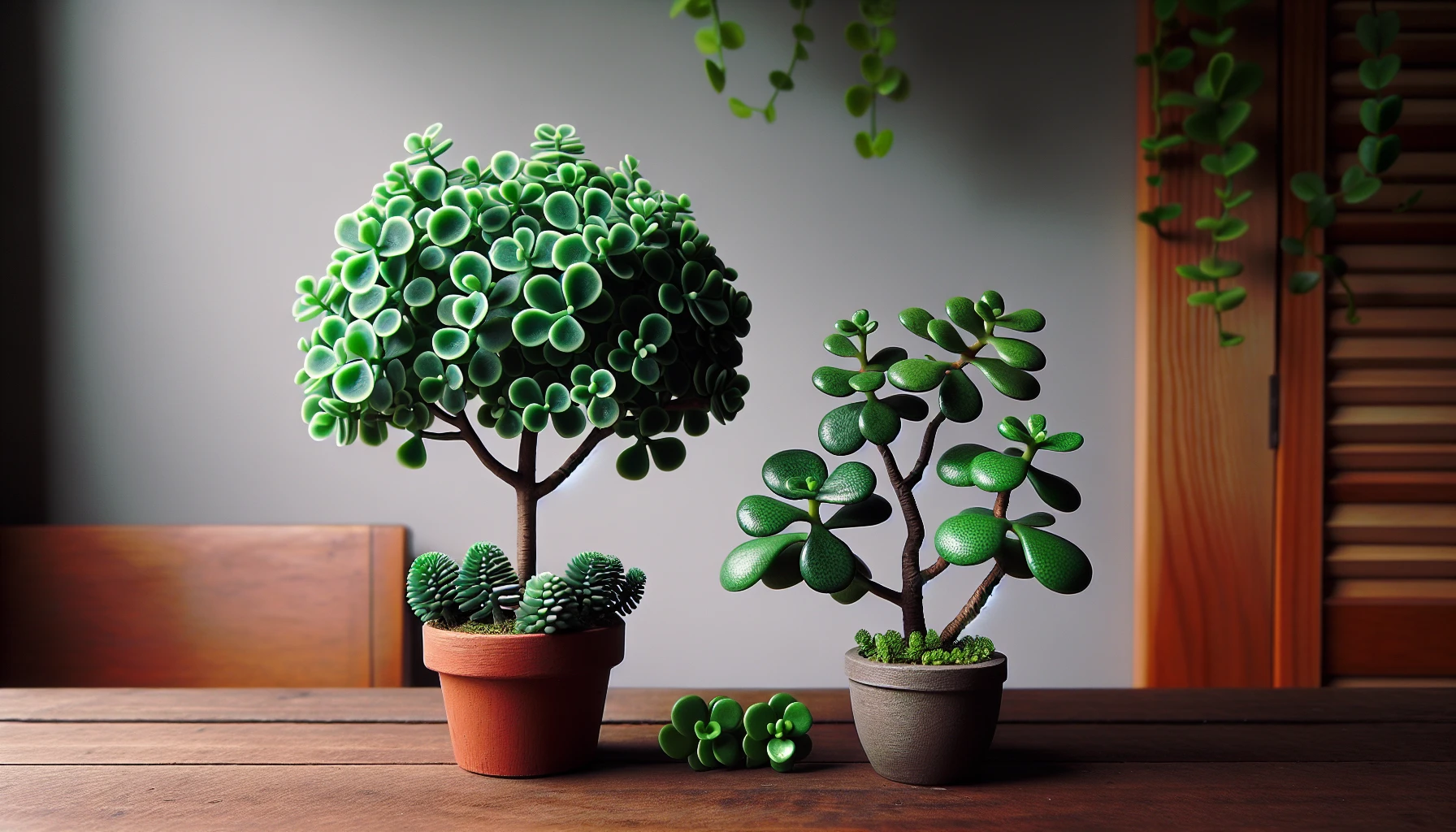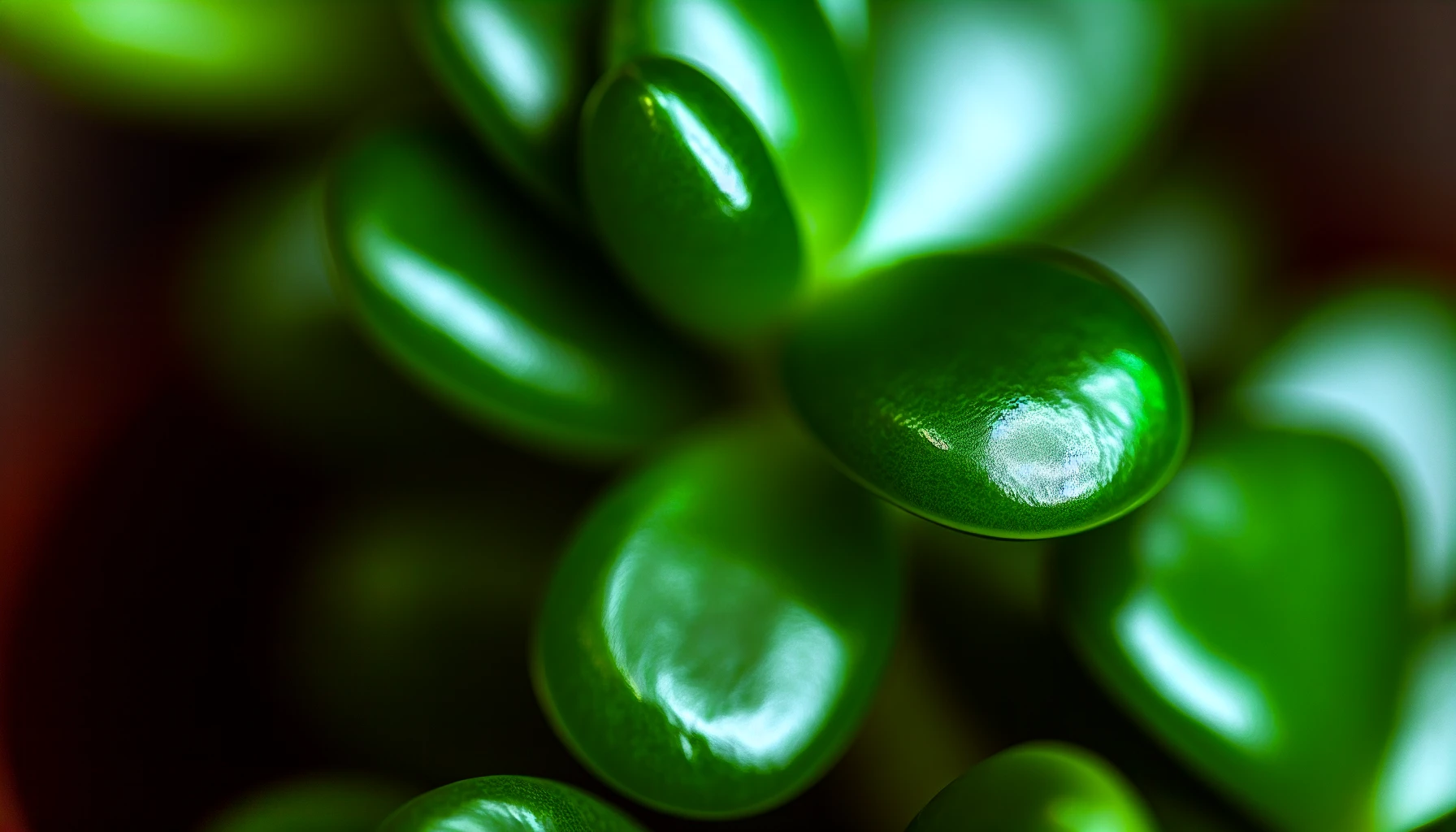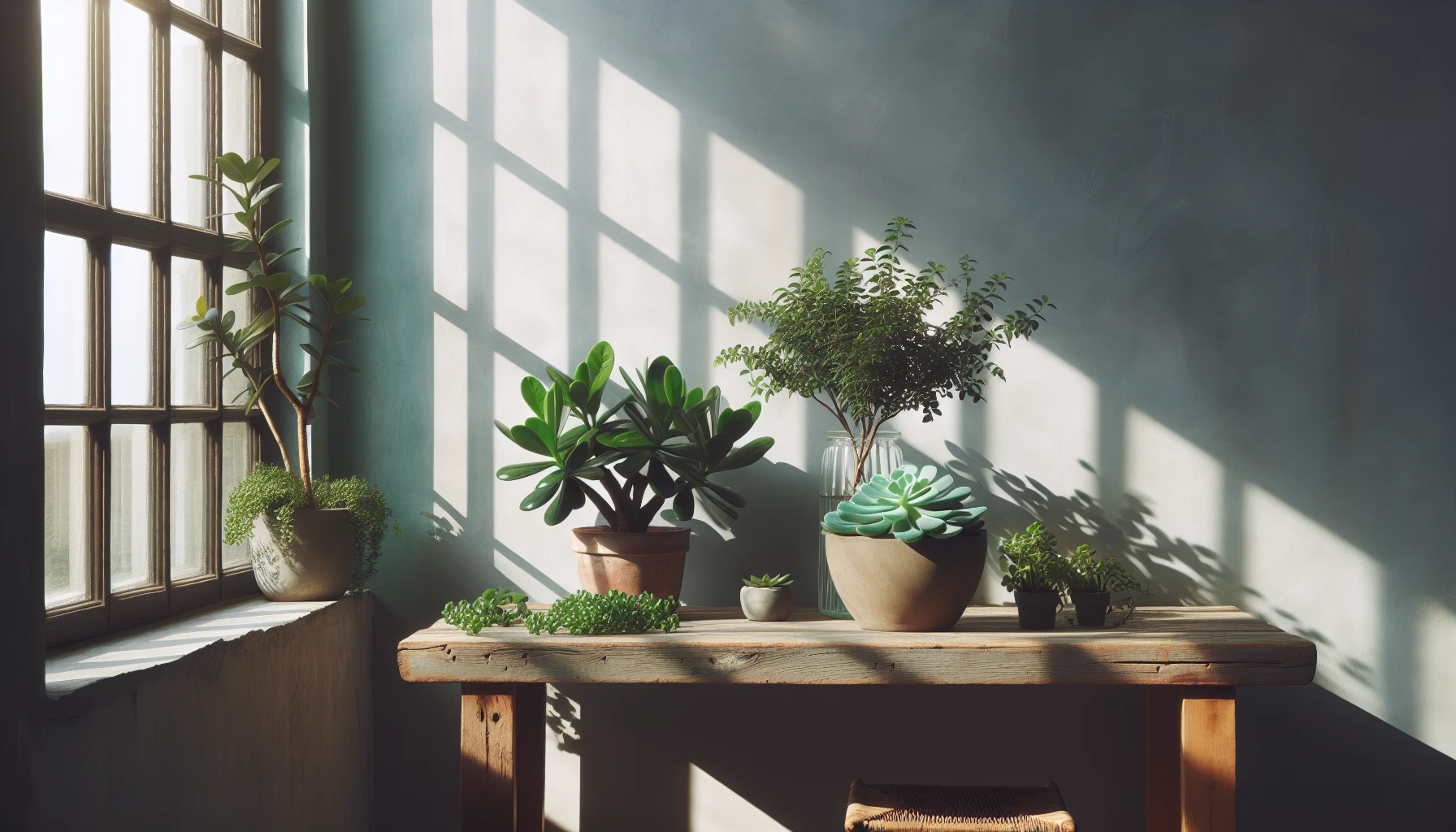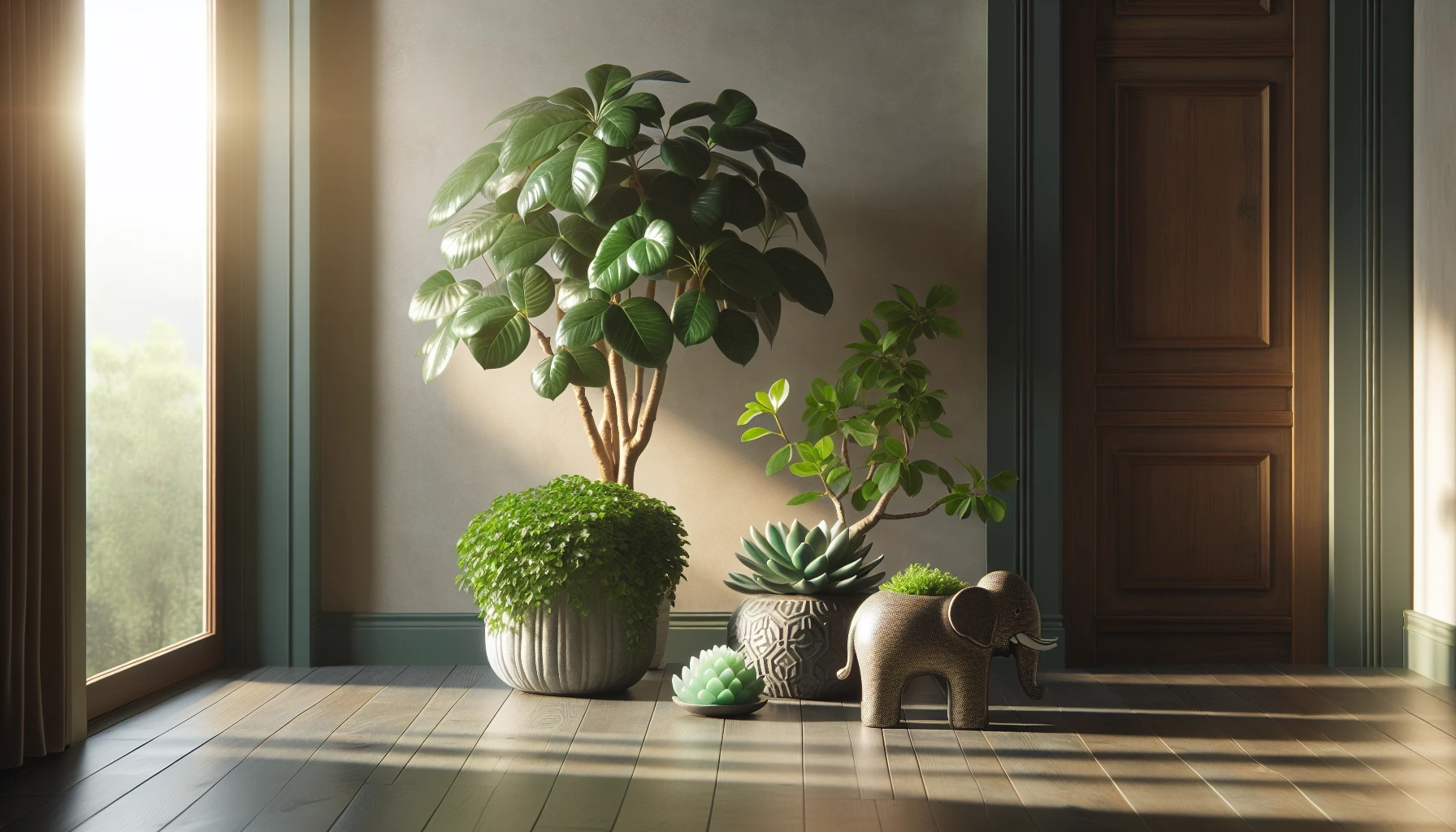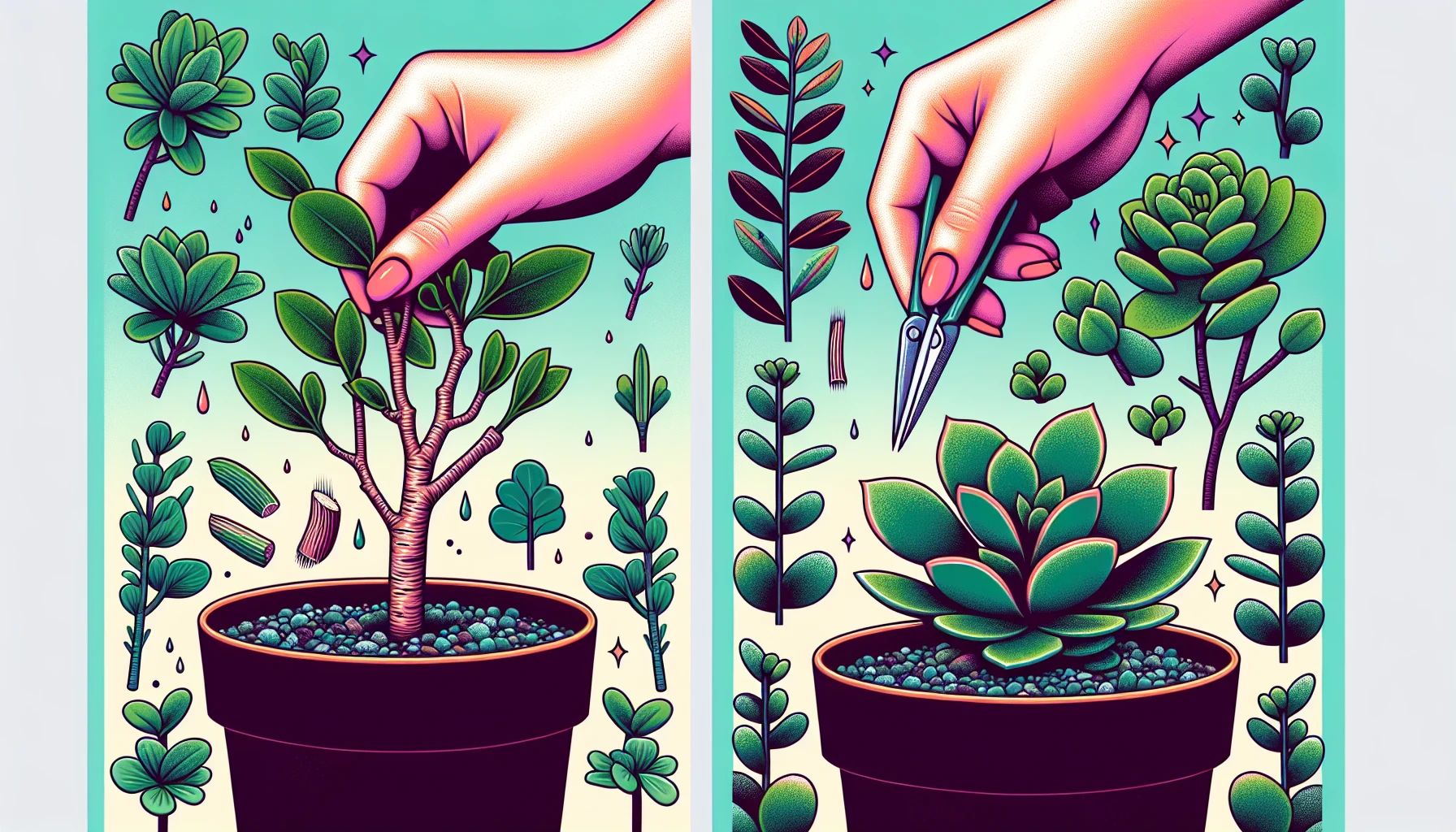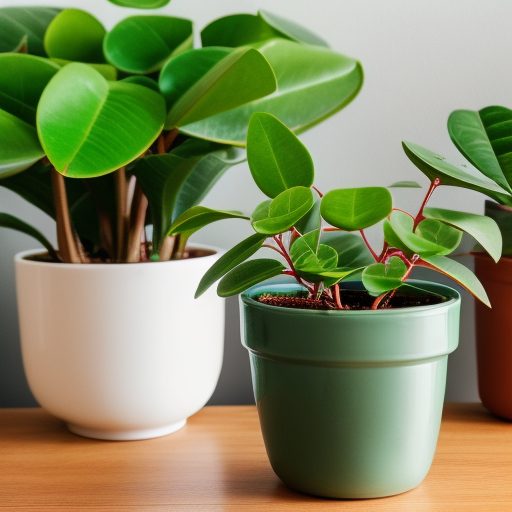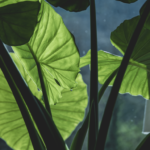HousePlantJoy is supported by our audience. When you purchase through one of our links, we may earn a small affiliate commission. As an Amazon Associate I earn from qualifying purchases. Your cost is not affected.
==================
This comprehensive comparison between the “elephant bush vs jade plant” will provide you with all the information you need to select the perfect green addition to your living space. Do you want to add a touch of nature to your home, but are not sure which plant to choose? Look no further! After reading this article, you’ll have a clear understanding of the key differences and similarities between these two popular succulents, as well as tips for their care, propagation, and symbolism.
So, are you ready to embark on this fascinating journey into the world of elephant bush and jade plant? Let’s get started and uncover the unique charm and beauty of these two plants, along with their practical uses and benefits for your home and well-being, through our “elephant bush vs jade plant” guide.
Key Takeaways
- This article provides insight into the key differences between elephant bush and jade plant to determine which is best suited for home greenery.
- It compares growth patterns, leaf characteristics, stems & flowers of both plants to identify & distinguish them.
- Both offer aesthetic appeal as well as practical uses such as air purification and potential health benefits.
Elephant Bush vs Jade Plant: Unveiling Key Differences for Ideal Home Greenery
The elephant bush (Portulacaria afra) and jade plant (Crassula ovata) are both evergreen succulents that have been embraced by plant enthusiasts worldwide. While they share some similarities, such as their classification as succulent plants and their ability to thrive in warm, sunny areas, they are in fact very different plants. To further complicate matters, both plants can be grown together in the same pot, as they possess similar care requirements. So how can we tell them apart and determine which one is the ideal choice for our home greenery?
This portion will concentrate on the unique qualities of elephant bush and jade plant, assessing their growth patterns, leaf attributes, and stems and flowers. By the conclusion, you will have the knowledge to distinguish these two plants and decide which one is the ideal choice for your indoor environment.
Elephant Bush vs Jade Plant, Briefly
The elephant bush, scientifically known as Portulacaria afra, is native to Southern Africa and is commonly referred to as the “dwarf jade” due to its similarities in appearance to the jade plant. The jade plant, or Crassula ovata, is another popular choice for home greenery and is often associated with good fortune in various cultures. Bonsai trees, including the elephant bush and jade plant, can bring a touch of nature and serenity to any living space. Also known as the elephant plant, the elephant bush adds an exotic flair to your indoor garden.
Both plants require similar growing conditions, but they differ in certain aspects such as:
- Size
- Hue of stems
- Form of stems
- Edibility
Before deciding on which plant to choose, consider what you prefer and the environment you can provide for them. For example, if you have a penchant for shiny green leaves, both jade plant and another option might be a good fit for you. The subsequent segments will cover their unique traits, care requirements, and cultural significance, guiding you towards a decision.
Distinctive Traits of Elephant Bush vs Jade Plant
In this section, we will compare the growth patterns, leaf characteristics, and stems and flowers of elephant bush and jade plant. Understanding the differences and similarities between these two plants will not only help you identify them but also assist you in choosing the right plant for your home, based on your personal preference and available indoor environment.
We begin by examining their growth patterns, leaf characteristics, and stems and flowers. We will then discuss the significant differences between the two plants, which will guide your decision-making process about which succulent is the best fit for your indoor space.
Growth Patterns: From Seedling to Mature Plant
One of the most noticeable differences between elephant bush and jade plant lies in their growth patterns.
- Jade plants exhibit slower growth and are bushier in shape.
- Elephant bushes tend to proliferate and are taller in stature.
- When fully matured, jade plants typically remain under 3 feet tall.
- The size range of elephant bush is 1-10 feet tall and wide.
In their natural habitat, both plants are slow-growing, with their growth rate not exceeding a few inches per year. However, when cultivated indoors, the elephant bush plant can remain diminutive, making it an ideal choice for home greenery. Interestingly, elephants play a role in the propagation of elephant bushes, as they help disperse the seeds while foraging.
Leaf Characteristics: More Than Just Green
Another key difference between elephant bush and jade plant is their leaf characteristics. Jade plants have rounded, dark green leaves which can change color to red in bright light. Elephant bushes, on the other hand, have small leaves growing on red stems. The leaves of elephant bush are small, fleshy, and green, and can vary in shape from round to oval. On the other hand, jade plant leaves are typically oval-shaped, glossy green, and often have a reddish tinge on the edges.
The variety of colors exhibited by these two plants adds an extra layer of visual interest to your indoor space. The jade plant’s leaves can range from light green to a rich jade green, while the elephant bush’s leaves can be white-variegated or purple-tinged depending on the variety. Both plants can provide a touch of natural beauty and elegance to any room, uplifting the atmosphere with their vibrant foliage.
Stems and Flowers: A Study in Contrast
The stems and flowers of elephant bush and jade plant also showcase some striking differences. Elephant bush stems are robust and succulent, with a brown and delicate texture, while jade plant stems appear thick and sturdy, with a smooth texture. As for their flowers, jade plant produces small white or pink flowers, whereas elephant bush flowers can be white, pink, or yellow.
Understanding the differences in stem appearance and flower types between these two plants can help you appreciate their unique charm and beauty. Whether you choose the elephant bush with its distinctive red stems and small leaves or the jade plant with its oval-shaped, glossy green leaves, both plants offer a natural and aesthetically pleasing addition to your indoor environment.
Cultivating Your Own Succulents: Elephant Bush vs Jade Plant Care
Having compared the unique characteristics of the elephant bush and jade plant, the next focus is their care. Both plants are known for their minimal care requirements and are easily grown indoors or outdoors. This section will guide you through the necessary care aspects, including light requirements, watering, and soil and potting to ensure your plants thrive and add beauty and positivity to your living space.
With proper care, both elephant bush and jade plant can become long-lasting, eye-catching additions to your home. By understanding their unique care requirements, you can create an ideal environment for these plants to grow and flourish, adding a touch of natural beauty to your indoor spaces.
Light Requirements: Seeking the Sun
Both elephant bush and jade plant require a considerable amount of light to thrive. While the jade plant is more tolerant of lower light levels, the elephant bush flourishes in bright, sunny conditions. Both plants require bright, indirect light when grown indoors, and it’s essential to provide them with the most light possible. Elephant bush can tolerate minimal direct morning sunlight, but excessive bright sunlight can harm its leaves, so it’s essential to strike a balance.
Place both plants near a south-facing window or in a well-lit area of your home for optimal light conditions. This will ensure they receive sufficient light for their growth and overall health. You’ll have beautiful, healthy plants that enhance your indoor environment’s aesthetic appeal by giving them the right amount of light.
Watering Wisdom: Avoiding Root Rot
Proper watering techniques are crucial for the healthy growth of both elephant bush and jade plants. They require hydration when the soil is dry, but jade plants are more tolerant of irregular watering. To ensure optimal growth and prevent root rot, it is essential to:
- Water the plant thoroughly, yet allow the soil to dry out between watering sessions.
- Use a well-draining soil mix and a pot with drainage holes.
- Provide sufficient air circulation around the plant to help prevent moisture buildup and minimize the risk of root rot.
Jade plants should be watered once every two weeks, while elephant bush requires more frequent watering, approximately once per week. It’s essential to monitor the moisture levels in the soil and adjust your watering schedule accordingly, taking care not to overwater or let the plant sit in standing water. By following these watering tips, you can maintain healthy, thriving plants that add natural beauty to your home.
Soil and Potting: Ensuring Healthy Roots
Elephant bush and jade plants grow best in well-draining soil with plenty of organic matter. Choose from compost or peat moss. Adding this to the soil will give optimal results. A well-draining soil is essential for promoting healthy root growth and preventing root rot, which can harm the plant’s overall health and vigor. A cactus potting soil or a combination of potting soil and vermiculite/pumice is recommended for elephant bush. For jade plants, a potting medium designed explicitly for cacti and succulents, such as Sun Gro Black Gold, is ideal.
When potting elephant bush and jade plants, choosing a container with drainage holes is important to prevent excess moisture from accumulating in the soil. This will help maintain the right moisture and air circulation balance around the roots, ensuring the plants’ continued health and growth.
You’re setting the stage to appreciate the natural beauty and benefits of these charming succulents in your home by giving the appropriate soil and potting conditions.
The Symbolism Behind the Plants: Lucky Plant and Money Tree
Elephant bush and jade plants aren’t just admired for their aesthetic appeal; they also possess cultural significance and are often associated with luck, prosperity, and wealth. This section will cover the folklore, beliefs, and superstitions surrounding these plants, revealing their symbolic importance in various cultures and traditions.
Understanding these plants’ symbolism and cultural significance can add another layer of meaning and appreciation to your indoor greenery. Whether you’re drawn to the jade plant for its association with good fortune or the elephant bush for its spiritual connotations, knowing the stories and beliefs behind these plants can enhance your enjoyment and connection with these living works of art.
Feng Shui and Plant Placement: Attracting Positive Energy
Incorporating elephant bush and jade plants into your home according to the principles of Feng Shui can attract positive energy and prosperity. Feng Shui practices suggest that jade plants should be located east of the home to promote family harmony, health, and the commencement of projects. The elephant bush is also viewed as a symbol of prosperity and abundance, and it’s suitable for homes and offices due to its thick, waxy leaves and ability to thrive in various conditions.
Careful placement of your elephant bush and jade plant according to Feng Shui principles can help create a harmonious and balanced environment that draws in positive energy, wealth, and good fortune. These plants add natural beauty to your living spaces and serve as powerful symbols of prosperity and abundance, imbuing your home with their beneficial energy and charm.
Beliefs and Superstitions: Plants of Prosperity
Exploring folklore and superstitions reveals elephant bush and jade plant as symbols of luck and wealth. The elephant bush signifies strength and good fortune. The jade plant is widely associated with luck, prosperity, wealth, and friendship and is especially valued in Chinese Feng Shui for promoting prosperity.
By understanding the beliefs and superstitions surrounding these plants, you can appreciate their symbolic importance and perhaps even draw inspiration and motivation from their associations with luck, wealth, and positivity. Whether you choose the elephant bush for its spiritual significance, the jade plant for its association with prosperity, or even the money plant, these plants can serve as a reminder of the power of positive thinking and the potential for good fortune in our lives.
Propagation Techniques: Stem Cuttings and Beyond
If you’re interested in expanding your elephant bush and jade plant collection, propagation is a simple and rewarding process. Both plants can be propagated through stem cuttings, although elephant bushes root faster. This section will offer a step-by-step guide for the successful propagation of both plants through stem cuttings and other methods, which will pave the way for an expanding collection of these beautiful, low-maintenance succulents.
Whether you’re a seasoned plant enthusiast or just starting with your first succulent, understanding the propagation techniques for elephant bush and jade plants can help you easily cultivate new plants. By following the steps outlined in this section, you’ll be well on your way to growing a thriving collection of these charming succulents, ready to enhance your indoor environment with their natural beauty and positive energy.
Starting New Plants: A Step-by-Step Guide
To propagate an elephant bush using stem cuttings, follow these steps:
- Take a stem cutting approximately two to three inches long.
- Allow the cut end of the stem to dry for approximately one week.
- Immerse the freshly cut end into rooting hormone powder.
- Plant the stem cutting in a well-draining soil mix.
- Maintain the moist soil and place the cutting in a warm and bright location, away from direct sunlight.
- After a few weeks, roots should develop, indicating successful propagation.
For propagating a jade plant, follow these step-by-step instructions:
- Take a stem cutting or leaves.
- Position them in soil with good drainage.
- Maintain them slightly moist and avoid direct sunlight until roots have developed.
- Provide care as required for a mature jade plant.
By following these instructions, you can propagate your jade plant with ease, ensuring a continuous supply of these stunning succulents for your home or to share with friends and family.
Caring for Younger Plants: Growth and Development Tips
Caring for younger plants is essential to ensure their healthy growth and development. Both elephant bush and jade plants require adequate light, regular watering, and well-draining soil to thrive. Inspecting the plants regularly for pests and taking the necessary steps to eradicate them is also important. Give your young plants the proper care for beautiful, healthy specimens that enhance indoor aesthetics.
Nurture newly propagated elephant bush and jade plant with care tips. Provide the right conditions for healthy growth, bringing joy to living spaces.
Elephant Bush vs Jade Plant in Design: Aesthetic Appeal and Practical Uses
Elephant bush and jade plants treat ailments and serve as houseplants. Use them in design for visually appealing arrangements, enhancing your home’s ambiance.
In our closing section, we’ll explore these plants’ aesthetic appeal and practical uses in different settings, showcasing their versatility and offering design inspiration for your home. From enhancing indoor environments to practical applications, discover how elephant bush and jade plants can enrich your living spaces and improve well-being.
Indoor Environment Enhancement: Natural Beauty
You can use the Elephant bush and jade plant in various ways to enhance your indoor environment. Their vibrant foliage and unique textures make them visually appealing additions to any room, creating a calming and soothing atmosphere that can improve the overall energy of your living space. Some design ideas for incorporating elephant bushes and jade plants in indoor spaces may include creating visually appealing arrangements by combining them with other succulents in a container garden or using them as standalone plants in larger spaces.
Incorporating elephant bushes and jade plants into your home decor allows you to appreciate their natural beauty, benefit from their air-purifying properties, and embrace their symbolic associations with luck and prosperity. Whether you choose the elephant bush for its distinctive red stems and small leaves or the jade plant for its oval-shaped, glossy green leaves, both plants offer a natural and aesthetically pleasing addition to your indoor environment.
Practical Applications: Beyond Ornamental Use
Beyond their looks, both elephant bush and jade plant have practical uses. You can juice Elephant bush leaves as a skin antiseptic. At the same time, the jade plant’s antioxidant-rich phytochemicals may have health benefits.
Incorporate these plants into your spaces to enjoy their beauty and potential health benefits.
Video Credits: Succulents Box
Summary of Elephant Bush vs Jade Plant
In conclusion, elephant bush and jade plant are lovely, low-maintenance succulents that add charm to your living spaces. This post compares their traits, care needs, symbolism, and uses, helping you choose between them. Understanding their unique characteristics lets you create a harmonious indoor environment with natural beauty and positive energy—elephant bush vs. jade plant – your guide to choosing the perfect home plant.
Choose the elephant bush for its red stems and small leaves. While the jade plant is known for its glossy green, oval-shaped leaves. Both offer a natural and aesthetically pleasing addition to your indoor environment. Bring the charm of these succulents into your home today and enjoy their benefits for years to come.
Frequently Asked Questions in Elephant Bush vs Jade Plant
Is Portulacaria Afra the Same as Jade Plant?
Portulacaria afra, commonly known as Elephant Bush or Asian Jade, is not the same as the Jade Plant (Crassula ovata). In Southern Africa, people use P. afra in salads and soups, as its succulent nature makes it suitable for human consumption and feeding livestock. On the other hand, C. ovata is famous for succulent gardens and terrariums but is mildly toxic. Dwarf Jade is similar but has smaller leaves, which makes it more suitable for Bonsai cultivation.
Is Elephant Bush Good for Feng Shui?
Placing an elephant bush in Southwest-facing spaces fosters the flow of chi, providing abundance and nurturing relationships.
What Are the Disadvantages of Jade Plants?
Jade plants can suffer from overwatering, resulting in mushy leaves that drop off the plant and attract pests and diseases. They are also vulnerable to drought conditions, causing dwarfing, foliage spotting, leaf drop, and even death.
How Do I Identify a Jade Plant?
Jade plants are succulent shrubs or small trees with thick, glossy green leaves, often with red edging and no petioles. They have a woody stem that becomes brown as it matures and will naturally shed lower leaves. To identify a jade plant, look for its oval-shaped leaves and prominent stipular scars.
How Can I Propagate Elephant Bush vs Jade Plant?
Stem cuttings quickly propagate elephant bush and jade plant, with the former rooting faster.
Follow Us:
For more posts regarding the best tips and tricks for caring for your plants, click here.
Our Instragam is filled with aesthetic and fantastic photography of plants that are a feast for your eyes.
Pin our Boards for an excellent curation of all the best plants that suit your preference.
Follow our Twitter account for short plant care tips and tricks anytime.
Tiktok
Our TikTok account features all the best short videos for you regarding plants, so better check us out now.


